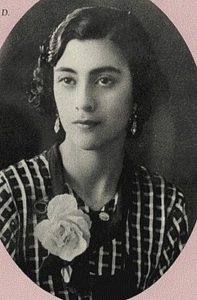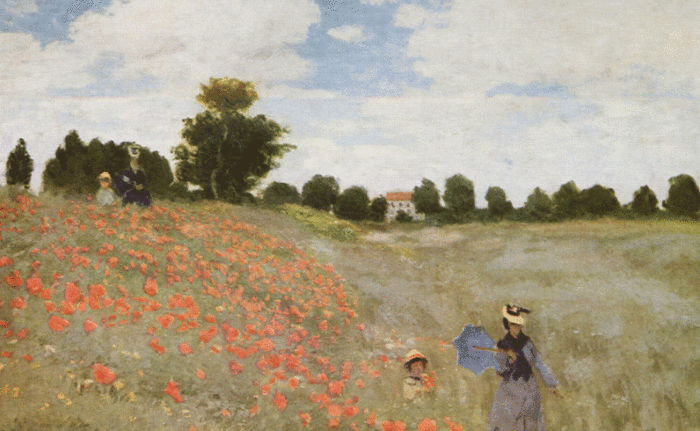On May 25 & 26 the Houston Symphony presents John Adams’ El Niño, an opera-oratorio written to celebrate the dawn of the new millennium in 2000. In this post, discover the diverse texts—ranging from Christian apocrypha to 20th century Mexican feminist poetry—that retell the Christmas story in this modern masterpiece.
In 1999, the Théâtre du Châtelet in Paris commissioned John Adams to compose a new piece for chorus and orchestra that would celebrate the dawning new millennium. Inspired by both the birth of a new era and memories of becoming a father, Adams composed “an oratorio about birth in general and about the Nativity in specific,” as he related in his autobiography, Hallelujah Junction. The Christmas story is one of the world’s most influential birth narratives, and it has been treated in music many times—Bach’s Christmas Oratorio and Part the First of Handel’s Messiah provide two famous examples.
Adams, however, seems to have been keen to retell this familiar tale in a way that would allow listeners to discover it anew, focusing on its mystical and miraculous aspects. Together with his frequent collaborator, theater director Peter Sellars, Adams compiled a libretto from a diverse array of sources, creating a literary polyphony of different voices from throughout history and the world. El Niño features texts from traditional biblical passages, apocrypha, a medieval sources, and Spanish-language poetry from Mexico, Chile, and Nicaragua. Appearing both in English translation and the original Spanish, these poems in particular seem suited to Adams’ approach; with echoes of the magical realism that pervaded Spanish-language literature of the Americas in the 20th century, they lend a fresh perspective to this age-old story.
Regarding the work’s title, Adams wrote, “My first impetus was to call this oratorio about birth How Could This Happen?, a phrase I’d found in one of the traditional church antiphons sung on Christmas Eve. But as the Hispanic theme grew and took center place, I changed the title to El Niño.” Literally translated as “the Boy,” El Niño is a traditional name in Latin America for both the Christ child and a stormy meteorological phenomenon that occurs around Christmastime in the Pacific Ocean approximately every four years. “I thought that the advent of the Christ child had caused its own kind of spiritual storm, blowing away the corruption and cynicism of the previous world order and offering a new and radically altered vision in its place,” Adams explained.
A Polyphonic Chorus of Voices
The oratorio is divided into two parts: the first relates the annunciation and the birth of Jesus, while the second includes the three wise men, the massacre of the innocents, and the flight into Egypt. The opening number, “I Sing of a Maiden,” displays many hallmarks of Adams’ musical style. Overlapping layers of pulsating rhythmic patterns drift through the score over slowly changing harmonies, creating a trance-like atmosphere. The unique scoring of El Niño is also immediately apparent as Adams includes a pair of guitars, perhaps a nod to the music of Latin America. The glistening texture that results may be an example of word painting: the text, an anonymous English poem, compares the Christ child to “the dew in April that falleth on the grass.”

The next number, “Hail, Mary, Gracious!,” is based on text from a 14th-century English “mystery play”—a medieval version of a Christmas pageant. A trio of countertenors represents the angel Gabriel as he tells Mary that she is to bear God’s child. The unique sound of the countertenors’ voices emphasizes the otherworldly nature of this encounter. At the end of the number, a synthesizer enters, adding an electronic timbre to El Niño’s mysterious soundscape.
The third number sets the first of four poems by Mexican author Rosario Castellanos (1925–1974). Though most of the oratorio’s texts are presented in English, all of Castellanos’s poems appear in the original Spanish, and her meditations appear at key moments throughout El Niño. In this case, the poem narrates the Virgin Mary’s inner monologue as she reflects on her miraculous pregnancy.
The following three numbers (based on the Gospel of Luke) lead to an intense, operatic scene in which Joseph discovers Mary’s pregnancy: the text of “Now she was sixteen years old” comes from the Gospel of James, an apocryphal text dating from the late 2nd century that details the life of Mary, while “Joseph’s Dream” is drawn from the writings of Martin Luther. This climaxes with “Shake the Heavens,” a baritone aria which invites direct comparison with Handel’s setting of the same biblical text in Messiah. After Castellanos’s introspective “Se Habla de Gabriel,” Part One of El Niño ends with “The Christmas Star,” a combination of poems by the Nobel Prize-winning Chilean poet Gabriela Mistral (1889–1957) and the medieval abbess Hildegard of Bingen (1098–1179). Mistral’s image of a girl running with a star that sets the world on fire becomes a powerful metaphor for the birth of Jesus.
Part Two begins with a gentle lullaby based on a poem by Sor Juana Inés de la Cruz (1648–1695), the Mexican intellectual prodigy and nun. Like those of Castellanos, her verses remain in Spanish. Biblical texts then narrate the perfidious King Herod’s paranoia, the visit of the three wise men, and the massacre of the innocents. These accounts are also elaborated with poems by the Nicaraguan Rubén Dario (1867–1916) and the Chilean Vicente Huidobro (1893–1948), culminating with Castellanos’s “Memorial de Tlatelolco.” The inclusion of this intense poem draws a parallel between Herod’s slaughter of the infants of Bethlehem and an infamous 1968 incident in which government forces killed hundreds of student protesters in Mexico City. After this violent episode, El Niño ends peacefully by following Mary, Joseph, and the baby Jesus on their flight into Egypt. After the playful “Pues está tiritando” (text by Sor Juana Inés de la Cruz), the apocryphal Gospel of Pseudo-Matthew illustrates two miraculous scenes: the baby Jesus tames dragons and commands a palm tree to bend so that Mary might eat of its fruit. El Niño ends with verses by Castellanos, a prayer sung by a children’s chorus.
Don’t miss John Adams’ El Niño May 25 & 26! Learn more and get tickets.
This blog was originally published by Calvin Dotsey on February 21, 2020.



